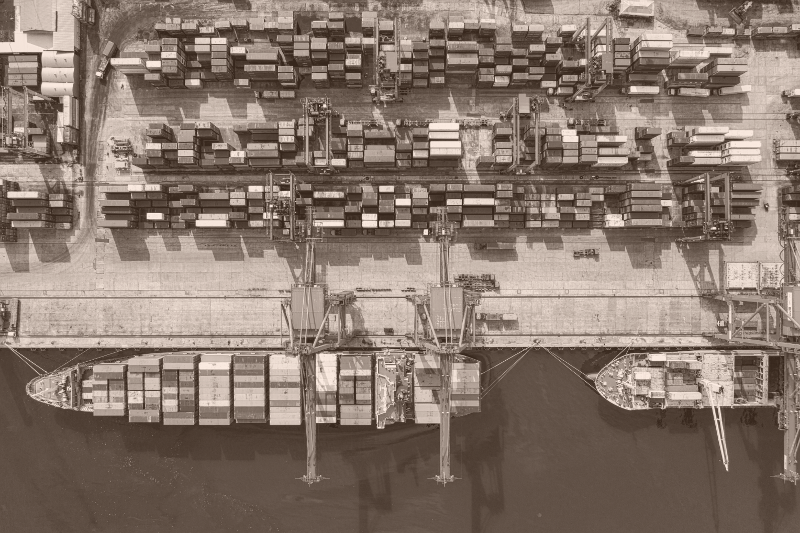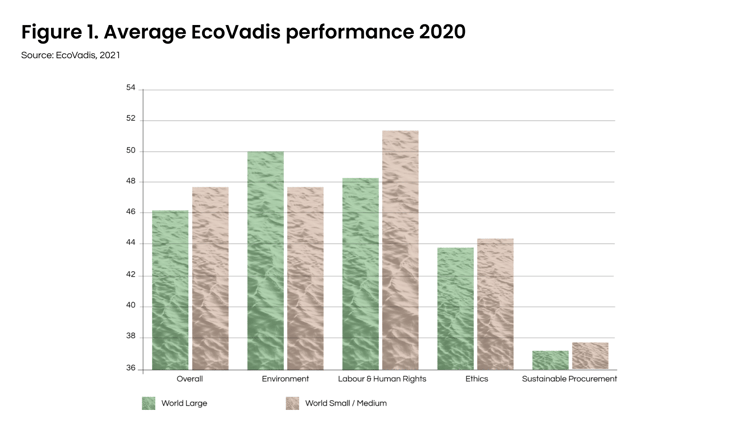The What, Why & How of Sustainable Procurement

A recent survey conducted by Futerra of 1,000 UK & US consumers demonstrated that 88% of them wanted brands to follow better social and environmental business practices. Entering 2022, scores of organisations are jumping on the bandwagon of setting sustainability goals. Yet one area is often overlooked: supply chains. Despite arguably being the area with the highest potential for impact, only recently have sustainable supply chains been making it to the table for conversations around positive business impact.
What is sustainable procurement?
According to the UN, “Sustainable procurement means making sure that the products and services we buy are as sustainable as possible, with the lowest environmental impact and most positive social results.” To put it simply, it means for companies to take a critical look outside their own operations at the impacts of their upstream suppliers.
Why is sustainable procurement important?
Much of an organisation’s environmental and social impact can be outside its direct operations – from the purchasing of materials to the outsourcing of production for finished products. This makes it a key focus area for improvement in corporate social responsibility (CSR). For most organisations, between 70 to 80% of their emissions are ‘Scope 3’, which covers an organisation’s indirect emissions through the supply chain. Within those 70-80%, the majority usually comes from upstream suppliers.
These numbers show that it is crucial to tackling supply chains to make meaningful progress on emission reductions. Aside from emissions, the complex nature of modern supply chains means tiers of direct and indirect suppliers are involved.
Without being aware, organisations could, for example, be sourcing materials that involve modern slavery or contribute to deforestation. Thus, while the task may seem daunting, it is critical for companies to gain insight into their procurement processes to be able to move ahead in their sustainability journey. Sustainable procurement offers the greatest opportunity for an organisation to shape their social and environmental footprint.

As highlighted by EcoVadis 2020 data, the area in which companies are performing worst is sustainable procurement (Figure 1).
Even more concerning is the fact that according to EcoVadis, sustainable procurement scores are following a decreasing trend, suggesting a lack of supplier collaboration on companies' sustainability goals.
New sustainable supply chain legislation
Aside from the benefits of sustainable procurement, countries and regions are increasingly proposing new mandatory legislation to cover global supply chains.
- In 2019, The Netherlands made due diligence procedures for child labour in the supply chain mandatory.
- The European Due Diligence Act is due to be voted on this year and come into effect in 2023. This would make it mandatory for larger companies to conduct due diligence regarding human rights and the environment throughout their supply chain.
Thus, making progress towards sustainable procurement will also support the future-proofing of your organisation against any regulatory changes that may occur.
How can sustainable procurement be addressed?
There are challenges that come with sustainable procurement practices. They range from the lack of transparency regarding supplier practices, the limited engagement companies have with their supply chain beyond direct suppliers, and the constraints created by an existing procurement policy for organisations.
These are only a few of the challenges that can prove disheartening for companies to tackle their supply chain. However, organisations often have more in place than they realise to start creating change. With a gradual and holistic approach, organisations can break down and make progress on the seemingly formidable task of sustainable procurement.
- Understand your current position and your goals – Where are you now and what do you want to achieve? This involves critically looking at how sustainable procurement is to be aligned with an organisation’s goals and values. It can also involve a benchmark performance to understand where the organisation lies in comparison to peers and the rest of the industry.
- Map your supply chain – A supply chain can consist of many tiers of suppliers and mapping it out can give insight into all the different elements involved. A wealth of digital tools for supply chain management has also made this a much more manageable task for many organisations.
- Prioritising areas of supply chain hotspots – This helps identify critical areas in the supply chain where the current greatest risks for your organisation are. This helps prioritise improvements, which is especially important for those with large numbers of suppliers, where it is difficult to tackle the entire supply chain at once.
- Set up policies and initiatives – Having a better understanding of your supply chain will allow for the setting up of policies to support tangible goals and targets to improve the sustainability and social practices within your supply chain.
- Supplier engagement – Work with your suppliers to look for opportunities to mitigate environmental impact and increase social impact. Having such conversations can create awareness and open up the space for positive changes in the way they work.
- Preferred supplier program – Build a preferred supplier program that rewards those who follow best practices of environmental and social standards. This creates incentives for suppliers to look at their environmental and social practices, especially when an increasing number of companies begin reevaluating their procurement strategy.
These steps are not something that an organisation needs to approach on its own. Working with digital tools, other organisations or partners can make the process easier, and even help set the stage for standardised supply chain sustainability requirements.
Conclusion
Organisations have long been disconnected from the inner workings of their supply chains. In 2022, this is not good enough. Organisations need to be aware of the impacts of their supply chain and make efforts to mitigate negative social or environmental impacts.
It may seem like your organisation is the only one to start tackling sustainable procurement. But making the change signals to your suppliers that your priorities for procurement are changing. If suppliers continue to get similar messages from their clients, there will be pressure to take a critical look at their emissions and social impact. The time is now for the private sector to talk and act on sustainable procurement.